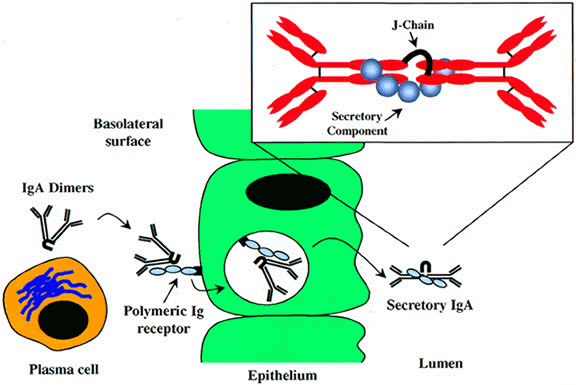

|
| Fig. 5. Model for production and structure of secretory IgA. Homing and maturation of plasma cells within mucosal lymphoid tissue results in formation of dimeric IgA, with monomers linked via J-chain polypeptide. Dimeric IgA is bound by polymeric Ig receptor on basolateral surface of lymphoid epithelial cells. Receptor-mediated endocytosis facilitates transport of dimeric IgA through epithelial cell cytoplasm. Polymeric Ig receptor-IgA complex is proteolytically released from vesicles, with polymeric Ig receptor remaining associated with IgA. On release of IgA onto the luminal surface, polymeric Ig receptor takes on the new name “secretory component” and dimeric IgA becomes known as “secretory IgA” or sIgA. |